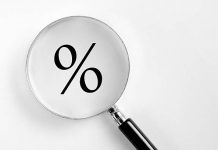A lull on the front of negative trade war headlines are giving markets a little pause. JPY extends decline for a third session, pushing USD/JPY back above the 110 level (USD/JPY: +0.37% year-to-date). The recent release of 1Q GDP growth data also had a muted impact on financial markets, as Japanese Nikkei 225 index closed +0.24% while European equities opened flat ahead of EU elections kicking off on Thursday.
Japan’s economy unexpectedly grew in 1Q 2019 at an annualized rate of 2.10% (prior: 1.90%), largely above forecasts of a contraction of -0.20%, providing PM Shinzo Abe with solid arguments to ramp up the hike in consumption tax to 10% from actual 8% in October of this year. Yet when looking closer at the underlying components of the metric, there are good reasons to question the trend of a potential economic recovery. Major contributors of the result are the net export balance, although both exports and imports quarterly figures dropped by -2.40% and -4.60% respectively while the latter suggests a major drop in domestic demand. Indeed, private consumption dropped by as much as -0.10% (prior: 0.20%), private non-residential investment decreased by -0.30% (prior: 2.50%) while an unusual contribution of public investment of 1.50% (prior: -1.40%) due to last year natural disasters came supporting the data. There is therefore much signs of growth uncertainty when it comes to the outlook in 2Q 2019. Despite improving corporate sentiment, risks over US – China trade frictions could accelerate the drawdown in external trade. Trump – Shinzo Abe meeting in Tokyo scheduled for 27 May 2019 is not expected to deliver a joint statement with regard to US trade deficit, as divergences, including the file on North Korean missile launch remain. Risks on JPY should thus not be ruled looking forward.
Currently trading at 110.06, USD/JPY is expected to trade sideways short-term.












